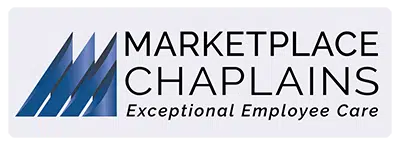How to Start an Employee Support Program For Your Company’s Unique Needs

Assessing Company Needs and Program Goals
The first step in starting an employee support program is to assess the specific needs of your workforce. Conduct surveys, interviews, or focus groups to gather feedback from employees regarding their challenges, concerns, and areas where they would benefit from additional support. This information will help you identify your program’s primary goals and objectives, ensuring that it addresses the most pressing needs of your employees.
Designing Supportive Mental Health Initiatives
Once you have identified the goals of your employee support services, it’s time to design initiatives that align close with those objectives. Consider a range of supportive initiatives such as:
- Mental Health and Well-being Programs: Implement programs focusing on mental health awareness, stress management, resilience-building, and work-life balance. Offer resources, workshops, and training sessions to support employees’ emotional well-being.
- Employee Assistance Programs (EAP): EAPs provide confidential counseling and support services to employees dealing with personal or work-related challenges. Partner with external providers or establish an in-house EAP to offer professional assistance when needed.
- Health and Wellness Initiatives: Promote physical health and wellness by organizing fitness challenges, health screenings, and wellness workshops, and providing access to fitness facilities or wellness programs.
- Career Development and Training: Offer professional development opportunities, training programs, and mentoring initiatives to help employees enhance their skills and advance in their careers. This support fosters growth and job satisfaction among employees.
Implementing the Employee Support Services
To successfully implement your health management support program, consider the following resources:
- Leadership Buy-In: Gain support from top-level management and ensure they understand the value of investing in employee support. Secure the necessary resources and budget to implement the program effectively.
- Communication and Awareness: Communicate the program’s objectives, initiatives, and available resources to employees. Utilize various communication channels such as emails, intranet portals, and team meetings to raise awareness and encourage participation.
- Training and Support for Managers: Train managers and supervisors on how to support employees’ well-being and effectively utilize the employee support program. Managers play a vital role in promoting the program and fostering a supportive work culture.
- Evaluation and Feedback: Continuously evaluate the effectiveness of your employee support program by gathering feedback from employees and monitoring key metrics such as engagement, job satisfaction, and retention rates. Use this feedback to make necessary adjustments and improvements.
Promoting Program Accessibility
To ensure the success and inclusivity of your employee support program, it’s important to consider accessibility. Provide multiple avenues for employees to access support, such as in-person sessions, virtual meetings, or online resources. This flexibility allows employees to engage with the program in a way that best suits their needs and preferences.
Additionally, consider the diverse needs of your workforce. Make sure the program materials are available in multiple languages if necessary, and provide accommodations for employees with disabilities. By creating an inclusive environment, you ensure that all employees have equal opportunities to benefit from the support program.
Related Articles
Tracking and Measuring Success
Tracking and measuring the success of your employee support program is vital to assess its impact and make informed adjustments. Define key performance indicators (KPIs) that align with the program’s objectives, such as employee engagement levels, absenteeism rates, or satisfaction surveys. Regularly collect and analyze data to evaluate the effectiveness of the program and identify areas for improvement.
Consider conducting anonymous employee surveys or focus groups to gather feedback on their experiences with the support program. This feedback can provide valuable insights into the program’s strengths and areas that require further attention. Use this information to refine your initiatives and enhance the overall effectiveness of the support program.
Chaplaincy Services
Chaplaincy is an invaluable component of many employee support programs, in all types of industries. Chaplains provide spiritual and emotional support to employees, offering a confidential space for individuals to discuss personal or work-related challenges, seek guidance, or find solace during difficult times. They can assist employees in navigating the complexities of their work-life balance, providing a compassionate ear and a source of comfort. Chaplains are trained to address a wide range of issues, from personal crises to workplace conflicts, and their presence can significantly enhance employee well-being and overall workplace morale. Including chaplaincy services in your employee support program demonstrates a holistic approach to employee care, ensuring that all aspects of an individual’s well-being are considered and supported.
Conclusion
Implementing an employee support program tailored to your company’s unique needs demonstrates your commitment to the well-being and success of your employees. By assessing their needs, designing targeted initiatives, promoting accessibility, and tracking success metrics, you can create a supportive work environment that fosters employee growth and satisfaction.
Remember that an effective employee health support program is an ongoing effort.
Regularly evaluate and adapt the program to meet the changing needs of your workforce and the evolving landscape of your industry. By providing the necessary resources and support, you empower your employees to thrive, leading to increased productivity, reduced turnover, and a positive work culture.
Investing in your employees’ well-being not only benefits them individually but also contributes to the overall success and growth of your organization. By creating a supportive work environment, you foster employee loyalty, attract top talent, and establish your company as an employer of choice. Start the journey towards building an effective employee support program today and reap the rewards of a happy, engaged, and thriving workforce.





